It’s day four of hiking to Everest Base Camp and, to my total surprise, I feel fantastic.
In my original Everest recap post I admitted that I did zero training for this trek. I was in Japan for the weeks leading up to Nepal and was more concerned with seeing the sites there than doing an endurance hike up Mt. Fuji (although that would have been cool too). So I’m a little nervous going into Everest. Will the altitude get to me? I’ve hiked the Inca Trail and Mt. Whitney without issue, but Base Camp sits at 18,000 feet in elevation, the highest I’ve ever climbed. What if my stamina doesn’t hold up? Or what if I’m able to hike the whole thing, but I’m in pain and miserable the entire time?
Well if that’s the case, at least the scenery will be spectacular.

So I’m thrilled to report that on day four I don’t even have sore hamstrings. In addition to drinking lots of water, I’ve been popping Ibprofin religiously every 4-6 hours and they must be working because I feel fabulous. The trail itself is easier than I expected. With the exception of some tough uphill stretches, the gradient is mild and very doable for my untrained body. I hike slowly and, aside from pausing to snap photos, I rarely stop moving. Slow and steady is my jam. And the views are even MORE spectacular than I imagined. As I wrote in my Everest journal that night, “These views… what universe am I in?! The first two hours of hiking on day 4 were the best of my life!” I can’t tell you what it’s like to walk among these giants because it’s grander than words allow. Hopefully these photos will do the job for me.
There are harder days coming. I know that once we hit the snow line in a day or two, every step will be tough. But for now I celebrate each hour that passes on the trail. I think about my parents — in their late 50s / early 60s — and how much they would enjoy hiking this terrain. I’m relieved it’s not as grueling as I feared.
We depart Namche Bazaar at 8am. The morning stretch takes about 3.5 hours and is my favorite part of the entire Everest Base Camp trek.


See those bridges way below? It’s the same area we crossed two days ago!




We’re headed to that white stupa in the middle of the photo below.








There’s a local man who cleans up this part of the trail and asks for donations. Every single person walking by drops in some money, so I follow suit. The bills of this currency (the Nepalese rupee) are so small and I drop in a 20 note, which is only about 20 cents.


That’s Ama Dablam in the distance, quite an impressive peak.

While hiking to Everest View yesterday, we looked down on this stupa from up above.

Here’s the trail snaking along the mountainside. There’s another stupa way off in the distance:








Another shot of Ama Dablam peak, which translates to “Mother’s Necklace.”

I believe this village is called Kanjuma. There’s a selection of jewelry for sale and a bakery with outstanding views of Ama Dablam — the perfect spot to rest with a pastry and cup of tea.

Here’s a glimpse of the afternoon portion of our hike: we’re heading across that bare patch in the center of the photo below. Tengboche village — our destination for the night — sits on top of that cliff, up on the right.




We break for a quick lunch of fried veggie potatoes. Hearty and delicious. I get a hot lemon tea and continue drinking lots of water.
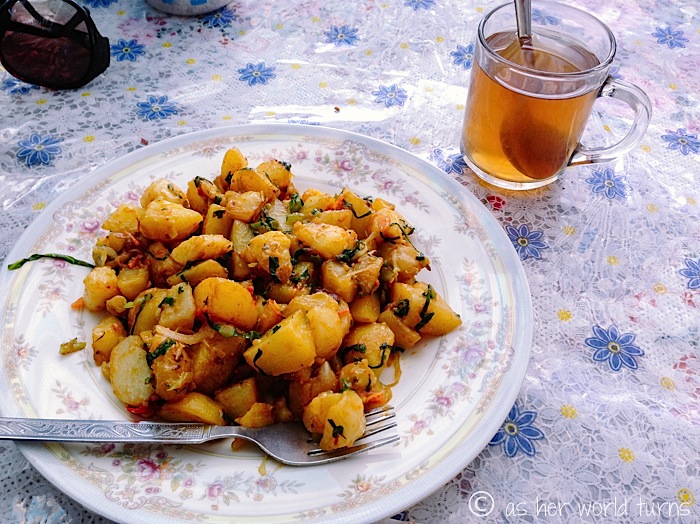
As we leave the restaurant I notice ‘stones’ on those tarps below. Turns out it’s really yak dung… locals dry it in the sun and then use it for fuel in stoves / fireplaces at night. So we’re breathing in yak poop smoke around the fireplace every evening. Fun times.
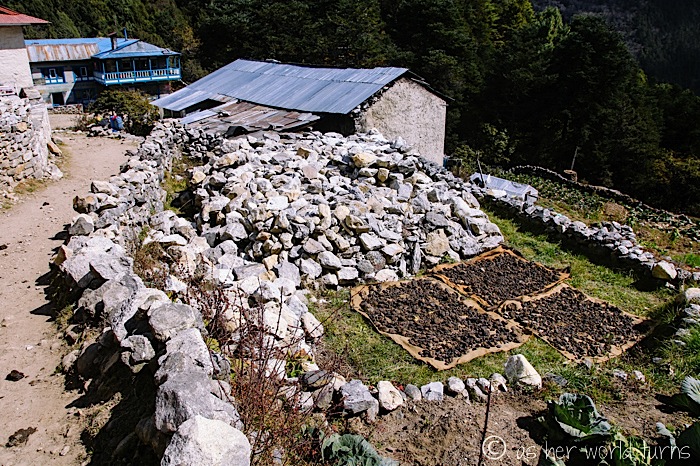
Time to go up, up, up…

I pass a sherpa bearing a heavy load as we ascend this steep stretch of trail. Look closely — those yellow boxes contain beer bottles, plus he’s got more liquids below that. I can only imagine the strain on his back. No surprise: his calf muscles are bulging. These sherpas have superhuman strength but the job comes with the unfortunate price tag of aching muscles and possible long-term bodily damage.
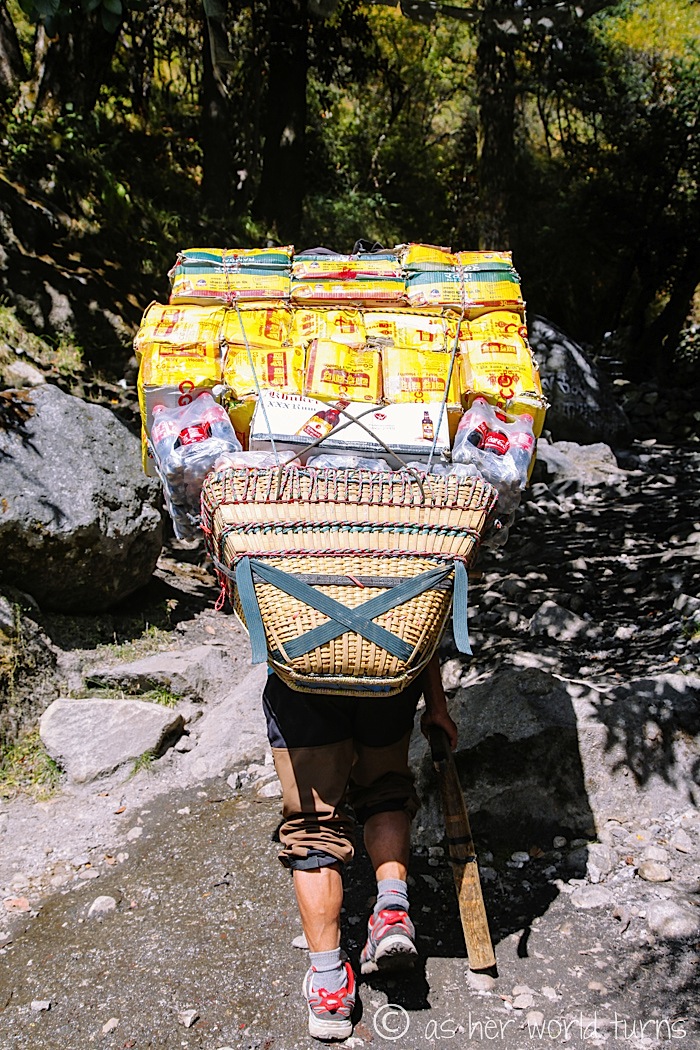
One more note about the sherpas — see that thick walking stick he’s carrying? It’s actually a makeshift stool (shaped like a T) that he’ll sit on when he stops to rest. This way he can lean against a tree or rock to release the weight for a moment without taking off his pack, which would be time consuming.

This part of the trail is lush and woodsy.


We arrive in Tengboche around 3pm.

Unfortunately all of the tea houses are full. This sometimes happens in October, the busiest month of trekking all year (Everest Base Camp stats from 2012: September = 3,000 visitors, October = 9,000 visitors, November = 5,000 visitors … spring is also a busy season, with March being most popular at that time of year).
So we press on about 20 minutes downhill to stay in the next village. The only bummer about this last-minute change of accommodation is that I’ll have to climb back uphill to Tengboche tomorrow morning at 6am to watch the monks chant at the monastery. If I had snagged a spot in town, I’d only have to walk two minutes instead of 20.
Unfortunately, solo travelers cannot reserve tea houses in advance. If you’re traveling with a large tour, then that company has already allocated beds for their group. But if you’re trekking alone with a guide, you can’t book a bed until you show up in person. Sometimes your guide will run ahead and grab a bed for you at the tea house if it’s getting late in the day. Regardless, you’ll never be without shelter for the night; the worst that can happen is you’ll walk another 20-30 minutes to the next village and stay there instead.
My room is in the structure below on the right, overlooking this field of tents:

My room for the night:

Guess what? Those tents below belong to a National Geographic tour group. Those tours are SO expensive (but awesome-looking) and their guests have to sleep in tents. Granted the walls of my tea house room are made of thin plywood and my mattress can hardly be classified as thick, but I’ll take indoor accommodation any day over sleeping on the cold ground outside. And just a reminder — a room in a tea house costs about $2.50 PER NIGHT. Why not sleep inside on a bed for that price? I guess those trekkers earn bragging rights for having camped on Everest. Fair enough.

I wake up at 5:30am to head back uphill with Mingma at 6. We arrive at the Tengboche monastery by 6:25, just before the monks begin chanting. They do this daily at 6:30am and again around 3pm. It’s very much worth going to see. They don’t allow video, but photos are permitted.

Here we are waiting for the monks to come out:

One by one, they filter in and sit in their respective spots to begin chanting. Their voices grow fuller as more monks join the group. This lasts maybe 30 minutes total; you can quietly exit at any time.






View from the top of the monastery in early morning light:

Oh, these giant metal circular things (pictured below) are used to collect solar power. You’ll see them in villages all along the trail. It is the only source of electricity for local families and tea houses. Since power is not easy to come by, it costs several dollars per hour to charge devices — and that price goes up the higher you climb. Keep this in mind when deciding what to bring with you. I end up charging my iPhone maybe three times over 12 days, since I use it to keep track of time and occasionally as a camera. I charge my camera battery twice during the trek (I have two back-up batteries with me but I’m paranoid about running out of juice). When I go to bed each night, I put my camera batteries, phone, and iPod at the bottom of my sleeping bag to keep them warm, because cold temps will drain power from devices. This limits the amount of money I spend charging batteries. And since I’m reading actual books — not digital copies — I don’t have to worry about charging an e-reader.

On the return trip back down the mountain several days later, very few trekkers are in Tengboche and I’m able to get a prime room at the lodge directly across from the monastery.

My view from this room:

An evening spent around the stove in Tengboche while reading One Hundred Years of Solitude:
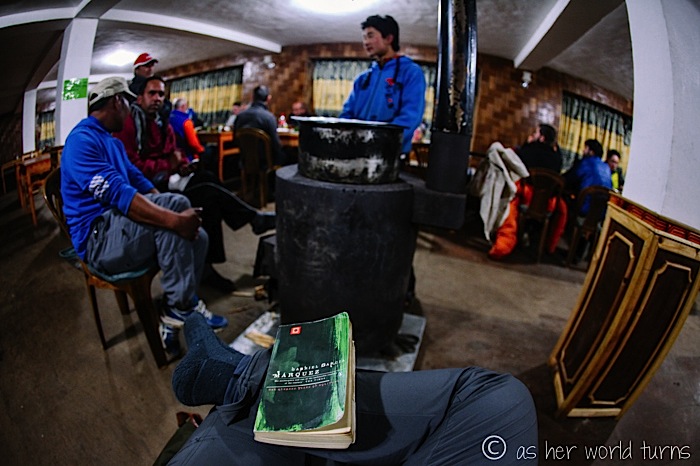
A few final photos from Tengboche, taken the morning we leave to hike downhill.


Whew, that was a long update. For the record, the trek from Namche Bazaar to Tengboche is my absolute favorite day of the whole Base Camp trip, and it’s hard to hold back from sharing photos of this glorious trail.
Next up: Dingboche. Things are about to get harder.

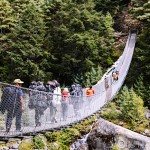
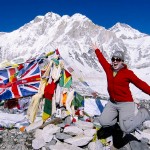
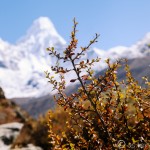
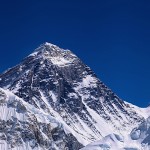
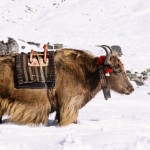

These posts are unbelievable. I am absolutely going to start researching a trip. I was always worried that this trek would just be way too crowded but this looks amazing and so beautiful that I don’t think I can resist it. Thanks for sharing this adventure!
I’m so glad you’re enjoying the photos and thoughts from the trail! I went during the busiest month but it wasn’t too crowded. My mind was blown every other minute by the epic views. The next couple of trekking days get harder, but I wouldn’t trade it for anything. I hope you get back there and then I can follow your adventure!